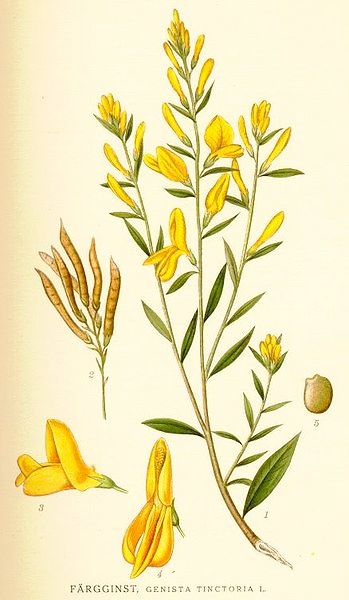Traditions:
Writing Pysanky
Traditions:
Writing Pysanky

Preparations
What kinds of eggs were used?
In more modern times, particularly from the mid-19th century on, pysanky have generally been made with chicken eggs, or those of other domesticated fowl (goose and duck). In earlier times, all sorts of eggs were utilized, including those of swans.
During the middle of the Lenten season, women would begin putting aside eggs, saving those that were most perfectly shaped and smooth. If possible, they should be the first laid eggs of young hens. Only fertilized eggs could be used to write pysanky, so the presence of a rooster was required could be used; it was commonly believed that, if non-fertile eggs were used, there would be no fertility in the home (i.e. crops and livestock as well as people).
How were dyes prepared?
Before the dyes could be prepared, the necessary water and dyestuffs needed to be collected. For talismanic reasons, the water needed to be “live” water, that which comes to earth from the sky (rainwater). It was believed that water from the first spring rain (that which wakes nature from its long winter sleep) was best. Live water was felt to have powerful magic, and this magic could be transferred to the pysanka.
Dyestuffs were collected throughout the year, dried and saved. They consisted of mostly of plant material, including leaves, flowers, roots, bark and berries, but animal products (insects and deer horn) were often used as well.
The dyes were usually prepared in secret, as the recipes were family secrets, handed down from mother to daughter over countless generations. They were produced by decoction, the plant materials being mashed, boiled and strained to extract their chromogenic substances. Often mordants were necessary to help these natural dyes bind properly to eggs, and to produce the necessary brilliance, clarity and lasting color.
Yellow dye was obtained from the flowers of the woadwaxen1, and gold from onion skins2. Red could be extracted from “Polish” cochineal (червяк/chervyak), and dark green and violet from the husks of sunflower seeds and the berries and bark of the elderberry bush. Black dye was made from walnut shells, although it was more of a very dark brown rather than a true black.
Imported dyestuffs were sometimes used to produce rare or difficult colors (e.g. indigo=blue, logwood=purple or black, or brazilwood=red). These were purchased from traders, peddlers who would sell them at Easter time, along with alum3 (галун/halun), a mordant that helped dyes “take” better and fade less. In the later years of the 19th century, chemical aniline dyes were added to the mix, either as purchased powdered dyes, or sometimes extracted from colored papers.
How were the styluses prepared?
Styluses were prepared at home, usually by taking a thin piece of brass and wrapping it around a needle, forming a hollow cone. This cone was then attached to a small stick (willow was preferred) with wire, string or horsehair.
While this would seem counterintuitive to the modern pysanka artists, flammable materials – string, horsehair – were often used in the creation of styluses. How was this possible? The use of candles in pysankarstvo is a fairly recent innovation, as candles were a luxury item in rural Ukraine, and thus not used in the traditional pysanka-making process. The stylus was dipped into molten wax, rather than being placed into a flame, so flammable substances like horsehair and string could be used to affix the metal cone to the handle.
In Lemko regions, which often preferred drop-pull pysanky to linear ones, making a stylus was much much more straightforward. A pin or small nail would be simply be driven into the end of a small stick.
__________
1.Genista tinctoria or Dyer’s broom, in Ukraine it is called Дрік красильний (drik krasyl’nyi). All parts of the plant, but especially the flowering tops, yield a good yellow dye, and from the earliest times have been used by dyers for producing this color.
While it was once commonly used in Ukraine for dyeing pysanky, its more common use was for dyeing fabrics, especially wool. The Romans employed it for dyeing, and it is described in writings by several Roman writers. Not only does dyer’s broom provide a fine yellow dye but, when combined with woad, it produces an excellent green. The color can be fixed using mordants like alum, cream of tartar and sulphate of lime.
A decoction of the plant was regarded in Ukraine as a remedy for hydrophobia, but its virtues in this respect do not seem to rest on very good evidence.
2.Onion skins are used in pysankarstvo to make a lovely gold dye. They are also used to dye krashanky and create the traditional “red” Ukrainian Easter egg. When boiled with onion skins, eggs will turn a gorgeous reddish brown color.
3.Ukrainians would often purchase and add “halun” (alum, or aluminum potassium sulfate) to the dyes as a mordant to ensure better adhesion of the dye to the egg. The alum also helped protect the eggs from premature fading due to exposure to sunlight. For this reason, pysanky are still known as “halunky” in some regions of Ukraine.
Alum was also used in pickling until quite recently, so was a commonly available substance.
Back to Traditions home page
Back to MAIN Pysanka home page.
Back to Pysanka Index.
Search my site with Google

Dyer’s broom